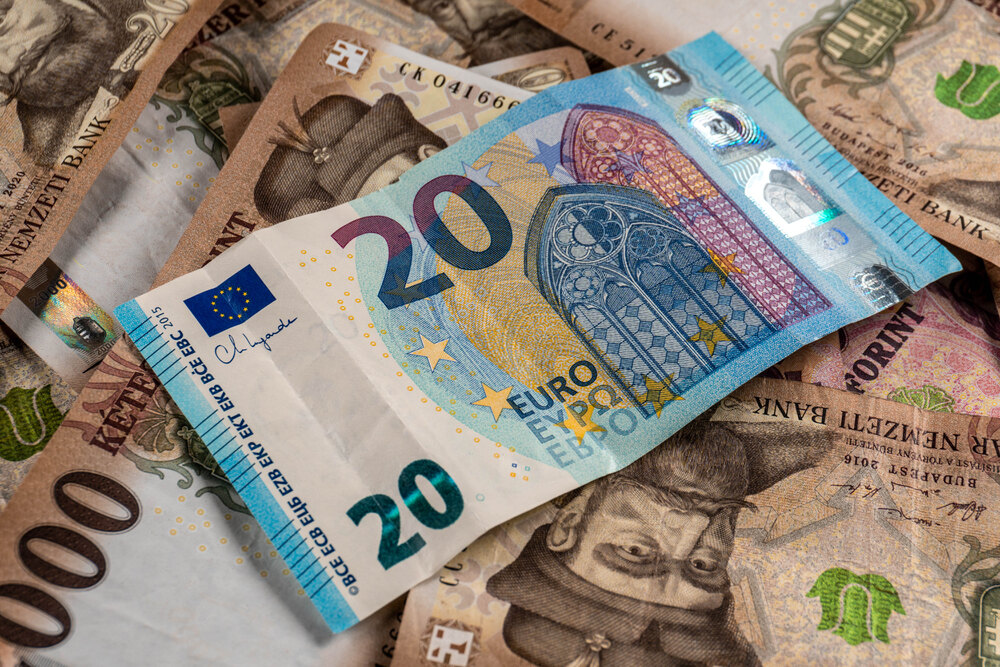Hungarian forint hits new 2-year low against the euro, attempts to recover

The Hungarian forint plunged to a new two-year low against the euro on Monday morning, briefly reaching an exchange rate of 412.5. Although it attempted to stabilise and regained some ground to 411.7 later in the day, concerns about monetary policy and economic factors continue to weigh heavily on the currency. Meanwhile, external developments, including the nomination of Scott Bessent as U.S. Treasury Secretary by President-elect Donald Trump, added to the volatility.
Key factors behind the forint’s depreciation
The Hungarian forint’s recent struggles are not isolated incidents but part of a broader trend influenced by both domestic and international factors. Over the weekend, global markets reacted strongly to the announcement of Scott Bessent’s nomination, causing a chain reaction that included weaker U.S. Treasury yields, a declining dollar, and gains for emerging market currencies, Portfolio reports. However, the Hungarian currency remained under pressure due to specific domestic economic challenges.

One significant issue is the expectation of future monetary easing by the Hungarian National Bank (MNB). Current forward-rate agreements suggest that markets anticipate a 50-basis-point rate cut within six months and a potential total reduction of 75 basis points within nine months.
One of the unique aspects of the forint’s decline on Monday was its contrast to other regional currencies. While the Polish zloty, Czech koruna, and Romanian leu showed resilience against the euro, the forint’s weakness was exacerbated by speculation about potential changes in the Hungarian National Bank’s leadership. Reports suggest that Finance Minister Mihály Varga may replace György Matolcsy as the central bank governor, fueling expectations of a monetary policy shift. This speculation, combined with anticipated rate cuts in 2024, has raised concerns about the stability of the forint and its appeal to investors.
Economic and geopolitical context
As we reported before, the forint’s depreciation has been exacerbated by the ongoing war in Ukraine, which has strained regional economies. Since January 2022, the forint has lost significant value, with its exchange rate against the dollar rising from 324 to over 400 at its peak. Contributing to this are Hungary’s strained relations with the European Union, including the withholding of EU funds and concerns over Hungary’s close ties to Russia. These factors have fueled fears of economic instability, further driving down investor confidence.
Additionally, weak economic indicators, such as a lower-than-expected German Ifo index, have done little to support the forint. Hungary’s central bank has been criticised for its monetary policies, with earlier decisions to maintain low interest rates reducing the attractiveness of Hungarian assets.
The trade-offs of a weak forint
While a weaker forint could benefit exporters by making Hungarian goods more competitive on global markets, it has significant downsides. Chief among them is the impact on inflation, which remains one of the highest in the European Union. Imported goods and services have become more expensive, placing additional strain on households and businesses.
Recent trends and outlook
Despite Monday’s plunge, the Hungarian currency showed some signs of resilience later in the day, briefly recovering below 411 against the euro. However, analysts caution that the currency remains vulnerable. The MNB’s interest rate strategy and Hungary’s broader economic policies will play a critical role in determining whether the forint can regain stability or faces further challenges in the coming months.
In the broader context, experts like Molnár Dániel from the Makronóm Institute highlight that the government and the MNB currently do not have a specific exchange rate target, Index reports. However, a significantly weaker forint could have inflationary consequences through higher import costs, eroding confidence in forint-denominated assets. Molnár noted that in cases of further weakening, the central bank might intervene with measures, including verbal assurances or more stringent monetary actions, to maintain financial stability and meet inflation targets.
As of now, the Hungarian forint’s future appears uncertain, caught between external pressures and domestic policy debates. The markets will be closely watching developments, particularly around the central bank’s policy direction and Hungary’s geopolitical positioning, for clues on the forint’s trajectory.
Read also:





